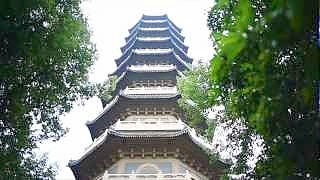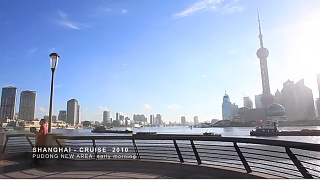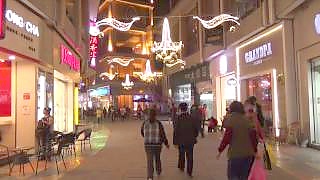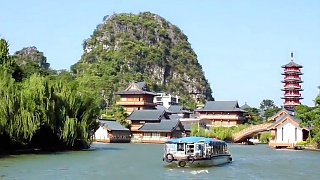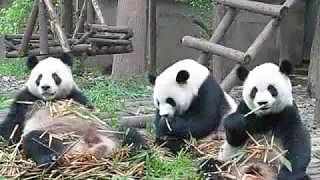With FunFancie ...
[640],shadow=true,start=118,stop=TeamLab is an interdisciplinary art collective and creative studio based in Japan that is renowned for its innovative and immersive digital art installations. It has expanded its presence globally.
In Shanghai, TeamLab has created several immersive art experiences that blend digital technology, interactive elements, and traditional art forms to create breathtaking environments that engage the senses and encourage visitor participation. These exhibitions often feature a combination of projection mapping, interactive projections, LED lights, soundscapes, and sensor-based technology to create dynamic and interactive environments.
One of the most notable exhibitions is TeamLab Borderless Shanghai, which is featured here. It is characterized by its seamless integration of digital art into physical spaces, creating a sense of boundless, dreamlike environments where visitors can explore and interact with the artwork freely.
In these exhibitions, visitors are invited to walk through rooms filled with mesmerizing digital art installations that respond to their movements and interactions. For example, visitors may find themselves surrounded by vibrant, blooming flowers that change color as they move, or immersed in a digital ocean where schools of fish swim around them in response to their presence.
The exhibition aims to create immersive experiences that evoke wonder, curiosity, and a sense of inter-connectedness with the world around us, unforgettable experiences that blur the boundaries between art, technology and the imagination.
Shanghai is one of China's most dynamic and cosmopolitan cities, blending a rich history with modern skyscrapers and vibrant culture. Here's what you need to know as a tourist visiting Shanghai:
Historical and Cultural Landmarks:
The Bund: This iconic waterfront promenade along the Huangpu River features colonial-era buildings on one side and futuristic skyscrapers on the other, offering stunning views of Shanghai's skyline.
Yu Garden: Dating back to the Ming dynasty, Yu Garden is a classical Chinese garden with pavilions, ponds, and rockeries. The nearby Yu Garden Bazaar is a great place to shop for souvenirs and traditional crafts.
Shanghai Museum: Home to an extensive collection of Chinese art and artifacts, including bronzes, ceramics, paintings, and calligraphy, the Shanghai Museum is a must-visit for history and art enthusiasts.
Jing'an Temple: One of Shanghai's most famous Buddhist temples, Jing'an Temple is known for its beautiful architecture, peaceful atmosphere, and towering golden Buddha statue.
Modern Attractions:
Shanghai Tower: Ascend to the observation deck of this iconic skyscraper, the tallest in China and the second-tallest in the world, for panoramic views of the city.
The Oriental Pearl TV Tower: Another iconic landmark, this futuristic tower offers observation decks, a glass-bottomed skywalk, and a revolving restaurant.
Shanghai Disneyland: Located in the Pudong district, Shanghai Disneyland offers a magical experience for visitors of all ages with its themed lands, attractions, and entertainment.
Shopping and Entertainment:
Nanjing Road: One of the world's busiest shopping streets, Nanjing Road is lined with department stores, boutiques, and restaurants. Don't miss the nearby pedestrian-friendly Nanjing Road East, known for its lively atmosphere and street performers.
Xintiandi: This upscale shopping, dining, and entertainment district features a mix of traditional Shikumen-style buildings and modern amenities, making it a popular destination for locals and tourists alike.
French Concession: Explore this historic neighborhood known for its tree-lined streets, charming cafes, boutiques, and art galleries.
Culinary Delights:
Shanghai Cuisine: Sample local specialties such as xiaolongbao (soup dumplings), shengjianbao (pan-fried dumplings), and Shanghai-style noodles.
Street Food: Wander through the city's bustling food markets and snack streets to taste a variety of street foods, from savory pancakes to grilled skewers.
Practical Tips:
Transportation: Shanghai has an efficient public transportation system, including the subway, buses, and taxis. Consider purchasing a rechargeable transportation card for convenience.
Language: While Mandarin is the official language, English is widely spoken in tourist areas, hotels, and restaurants.
Weather: Shanghai experiences four distinct seasons, with hot, humid summers and chilly winters. The best times to visit are spring (March to May) and autumn (September to November) when the weather is mild and comfortable.
Etiquette: Respect local customs and traditions, such as using polite language and avoiding loud behavior in public places.
Shanghai offers a captivating blend of old and new, with its historic landmarks, modern skyscrapers, vibrant culture, and delectable cuisine. Whether you're interested in history, architecture, shopping, or dining, Shanghai has something to offer every type of visitor.
 TeamLab, ShangHai – an awesome immersive audio-visual art experience
TeamLab, ShangHai – an awesome immersive audio-visual art experience










